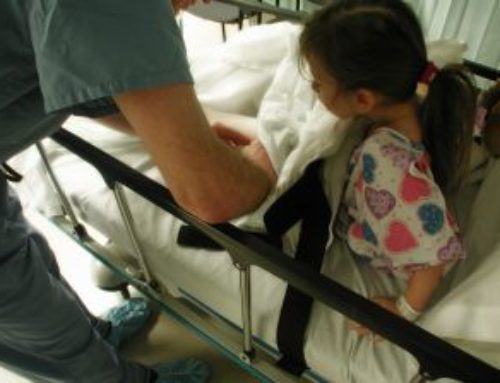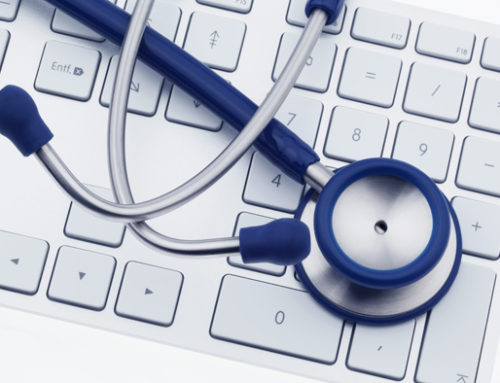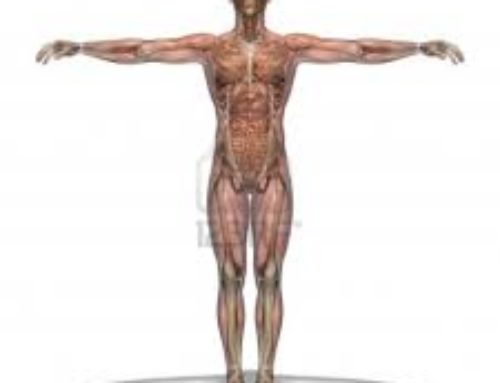
Giardiasis is a diarrheal illness caused by Giardia intestinalis (also known as Giardia lamblia) a microscopic single celled parasite that affects humans and animals. Giardia parasites can be found in contaminated food and water. Giardiasis is characterised by diarrhoea, nausea, flatulence and abdominal discomfort. The primary route of transmission for Giardiasis is faecal-oral (when faecal particles from one individual are introduced into the mouth of another). This can occur when an individual accidentally ingests water that has come in contact with faeces, food that has been handled with faeces present, or by poor cleaning after handling faeces. Once a human or animal is infected with Giardia, the parasite lives in the intestine and produces cysts, which are resting stages of the parasite that are covered in a protective layer. Large numbers of cysts are passed in the faeces, and survive outside the body for a long time. Only a few cysts need to be ingested for infection to occur.
The symptoms of Giardiasisinclude diarrhoea, loose or watery stool, stomach cramps and nausea. Symptoms generally begin 1-2 weeks after being infected, and in healthy people, resolve spontaneously.
Everyone is at risk of developing Giardiasis. Those most at risk include:-
§ Child care workers
§ Children who attend child care centres
§ Travellers, hikers and campers
§ Swimmers and people who may ingest untreated water
Giardiasis often occurs as community wide outbreaks from contaminated drinking or recreational water. Within the last 20 years, Giardiasis has become the most common cause of waterborne disease outbreak in the United States. In Australia, the main route of infection is hand-to-mouth, and the illness is becoming increasingly diagnosed due to changes in socio-economic factors (for example, growing number of toddlers in child care centres and increases in overseas travel to places such as South East Asia and India, where Giardiasis in prevalent).
Life cycle
Giardia parasites begin life as cysts, which are excreted into the environment by infected individuals through their faeces. The cysts are tough, resting stages of the parasites, and are able to survive in the environment for long periods of time, particularly in cool, moist conditions. Once several cysts are ingested by another (or the same) individual, Giardia emerge as active parasites that are able to colonise the small intestine by attaching to the epithelium (wall of the intestine). The Giardia parasites remain confined to this area where they can readily absorb nutrients, but do not spread through the body in the blood stream. As the parasites grow and multiply, they are excreted in the faeces as cysts, and are able to start their life-cycle again. If the same individual re-ingests more cysts, then the infective process starts over again.
Symptoms
Giardiasis is a gastrointestinal disease that can cause a variety of symptoms that include:-
Diarrhoea – frequent and watery bowel movements that can be acute (rapid and severe) or chronic (long lasting and recurrent). Diarrhoea can cause dehydration by removing large quantities of water from the body.
Malaise – physical, general discomfort.
Flatulence – a state of excessive gas in the digestive tract.
Steatorrhoea – faecal matter that is bulky, pale, foul-smelling and floats due to an excess of fat.
Epigastric pain – pain across the stomach area.
Bloating – swelling of the stomach or digestive tract by excessive gas.
Nausea – an unpleasant sensation of feeling sick with inclination to vomiting. Vomiting is rare but can be violent when in occurs.
Fatigue – feeling of weariness, sleepiness, or irritability.
Dehydration – the depletion of bodily fluids. Symptoms and signs of dehydration include increased thirst, a dry mouth, weakness and light-headedness.
Malabsorption – impaired absorption of nutrients from food such as sugars, fats, proteins, or vitamins. The signs and symptoms of malabsorption may include diarrhoea, cramping, frequent stools, bloating, flatulence (gas), and abdominal distension (bloating of the stomach).
In severe cases malnutrition (state of poor nutrition from inability to absorb foods) and anorexia (uncontrolled loss of appetite) can occur. In healthy individuals, Giardiasis is not normally life threatening, and the condition resolves spontaneously after experiencing symptoms for 2 to 6 weeks. Infection occurs without symptoms (asymptomatic) in up to 50% of cases. Asymptomatic individuals are infected with Giardia and continue to release cysts in their faeces without any of the associated symptoms such as diarrhoea or nausea. Only a small proportion of people suffer from severe symptoms, and these are often young children or immunocompromised individuals, who are unable to develop a normal immune response to the infection.
Transmission
Giardiasisis readily transmitted in situations where hygiene is poorly understood or difficult to maintain. It is commonly associated with young children and the adults who care for them. Giardia can be found in soil, food, water or on surfaces which are contaminated by the faeces of an infected individual. In these situations, individuals become infected when they accidentally ingest the parasite. When a person or animal becomes infected, Giardia live in their intestine and are released through bowel movements.
Giardiasis can be spread:-
§ By accidentally swallowing, or putting something into your mouth that has come into contact with faeces of a person or animal infected with Giardia.
§ By swallowing water contaminated with Giardia. This includes swimming pools, spas, fountains, rivers, lakes, ponds, and springs or streams that are contaminated with human or animal faeces.
§ By accidentally swallowing Giardia picked up from surfaces such as toys, bathroom fixtures, nappies or changing tables.
§ By eating raw food contaminated with Giardia such and fruits, vegetables or raw meats. Any food to be eaten uncooked should be washed thoroughly with water.
Giardiasis is very contagious. To avoid spreading the illness to others:-
§ Wash hands with soap and water after going to the toilet, changing nappies, or before preparing/eating food.
§ Do not swim in recreational water if infected with Giardia. Cysts can be passed in the stool for several weeks after symptoms cease. Therefore recreational swimming should be avoided for at least 2 weeks after symptoms stops.
§ Avoid faecal exposure during sexual intercourse.
Diagnosis
Diagnostic tests of the stool can determine if there are any signs of Giardia infection. Giardiasis is often hard to diagnose, therefore several stool samples across different days may be required to check for the presence of parasites or cysts. If Giardia is not detected in the stool, but is still suspected, then duodenal intubation and biopsy may be required. This procedure involves the insertion of a cannula or tube into the duodenum (the part of the small intestine near the stomach) and examination of tissue or duodenal liquid from the presence of Giardia parasites or cysts. Giardiasis can also be diagnosed with an antigen test. This is a very accurate assay that uses an enzyme to detect specific antibodies (molecules that fight infection), which are produced by the immune system in response to infection with Giardia.
Complications
Giardiasis generally resolves without complication, but infection can cause damage to the small intestine when the parasites attach to the epithelium. Colonisation of the small intestine can also lead to inflammation and atrophy (degeneration and weakening) of the mucous membrane lining the intestine. This condition reduces the adsorptive capacity of the intestine, which can lead to malnutrition. These problems are generally healed by the body once the individual is free from infection and is no longer releasing cysts.
Treatment
Besides drinking plenty of water to minimise the effects of dehydration, Giardiasis does not generally require any treatment. There are four prescription drugs available to treat severe Giardiasis:-
Metronidazole – anti-infective medication which is selectively taken up by the parasites and impairs DNA synthesis, resulting in cell death. Nausea and diarrhoea are side affects commonly associated with metronidazole, but convulsive seizures and peripheral neuropathy (numbness) have been reported in some people.
Tinidazole – is prescribed to treat a variety of parasitic infections and works in the same way as metronidazole. Side effects include palpitation, decreased appetite, weakness, fatigue, malaise, nausea and drying of the mouth.
Furazolidone – is an antibiotic used to treat diarrhoea and enteritis (inflammation of the small intestine) caused by parasitic infections. Furazolidone can cause serious side effects when taken with certain foods, beverages, or other medicines.
Mepacrine – is an oral antibiotic that is rapidly absorbed from the gastrointestinal tract and inhibits the growth of Giardia parasites by affecting cellular activity. Mepacrine is also called quinacrine and has several serious side effects including dermatitis and psychosis.
Prevention
Practice good hygiene
The best way to stop spreading Giardiasis is to practice good hygiene by washing hands thoroughly after using the toilet, changing nappies and preparing food.
Avoid water that might be contaminated
To avoid becoming infected with Giardia, avoid water that might be contaminated by not swallowing recreational water or drinking from untreated sources such as lakes, rivers and streams. When travelling overseas, avoid using or drinking water that might be unsafe. If there is no bottled drinking water available, then water can be treated by boiling rapidly for at least 1 minute or by filtering through a one-micron sized filter that is rated for ‘cyst removal’.
Avoid food that might be contaminated
Wash all vegetables or fruits that will be eaten raw in uncontaminated water before eating. When travelling overseas to areas with minimal water treatment and sanitation systems, avoid eating uncooked foods.






Leave A Comment